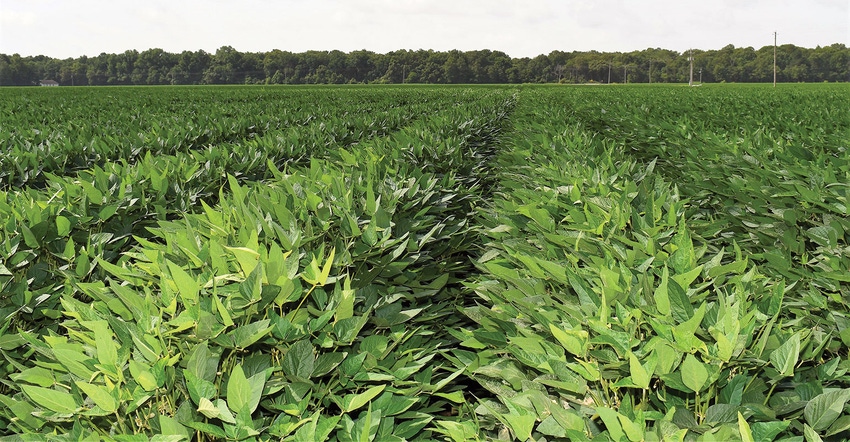
Corn and soybean acreages are down but average farm price for each commodity is up.
During a recent webinar, Will Maples, Mississippi State University Extension assistant professor in agricultural economics, presented a row crop market outlook focusing on both the nation's overall numbers as well as zeroing in on Mississippi's crop outlook.
Acreage report
The National Agriculture Statistics Service June acreage report shows the first acreage numbers compared with the prospective planting report that came out in March.
"In March, the National Agriculture Statistics Services (NASS) surveyed farmers about what they intended on planting this year, and in June, they surveyed farmers again about what they actually planted," Maples said. "The corn acreage is the main topic of interest. Corn back in March was estimated at 97 million acres, but in June, the report showed a 5 million-acre drop from the original prediction.
"In Mississippi, we saw a drop from 710,000 acres to 550,000 acres, most likely due to the wet planting conditions. Meanwhile, soybeans stayed relatively the same nationally from the March to June report. In Mississippi, we picked up some acreage in soybeans, probably from the corn acreage we didn't get planted in time."
Cotton acreage dropped from 13.7 million acres to 12.1 nationwide.
"In Mississippi, we saw a drop in cotton from 660,000 acres to 520,000 acres. Cotton acreage decreased the most in Texas," he said.
"Rice and peanuts stayed fairly the same nationally, but peanuts picked up about 5,000 acres in Mississippi from the March report."
Corn was originally estimated to have one of the highest planting years in the U.S. This begs the question: Where did the 5 million acres go if not planted in corn?
"We're not sure where the 5 million acres of corn went because it didn't go to soybeans since soybean acreage didn't change much," Maples said. "We will likely have to see what the preventative planting numbers are coming out of the 2020 planting season."
WASDE report
Marketing years vary depending on the crop. For rice, the marketing year is August to July. Corn, soybeans, and sorghum are September to August, and wheat is June to May.
"The new World Agricultural Supply and Demand Estimates (WASDE) came out July 10. All the numbers represent the different marketing periods for each crop," Maples said. "For instance, the story with cotton, on the supply side, was the decrease in acreage. This dropped the U.S. production forecast for this 2020-2021 marketing year from 19.5 million bales to 17.5 million bales, thus dropping total supply.
"Looking at consumption, exports took a hit, down from 16 million bales to 15 million, but these are still decent export numbers. It's not surprising to see them drop since this is based on the overall world economy, which is still sluggish due to the pandemic."
According to the WASDE report, ending stocks dropped to 6.8 million bales in the U.S. Stocks-to-use ratio is down a bit, and the average farm price is up to 59 cents.
Soybean and corn prices up
Soybeans planted acres didn't change much from last month's prospective planting report. The total supply is sitting at 4.7 billion bushels, and the total production didn't change much. The reports show 4.3 billion bushels in total consumption. Exports are up from last year to 2 billion bushels.
"Stocks, overall, are up slightly, and the average farm price went up to $8.50," Maples said. "When we talk about average farm price, remember, this is the average price a farmer receives throughout the whole marketing year, and it's weighted by how much is marketed at each time of the year. The more you sell at one point in the year it's weighted more. While I'm saying $8.50 soybean price, this is a national average for the whole year. In Mississippi, we usually do better in soybeans than the national average farm price."
The main aspect of the corn balance sheet out of the WASDE report is acreage decreased by 5 million.
"The total production is 15 billion bushels of corn, and the total supply is 17.2 billion bushels," he said. "Consumption for corn is sitting at 14.6 billion, up about a billion bushels from last year, and exports are up.
"Overall, there are 2.6 billion bushels of corn in ending stocks, 18% stocks-to-use ratio. The average farm price is up to $3.35. This is better than where we were at $3.20. It is still not a great average farm price for corn, but with this reduced acreage, we're seeing an increase in price.
"We're starting to get into a critical cycle for the corn growing season, so the weather is going to be our driving factor the next couple of months for where exactly this production might go and the effect on price."
About the Author(s)
You May Also Like




